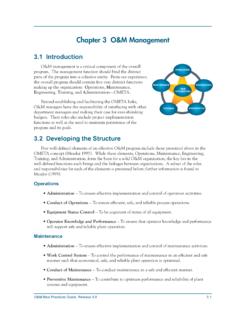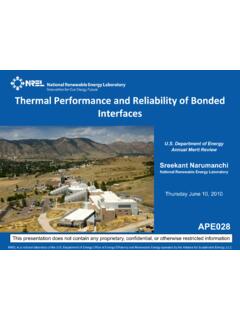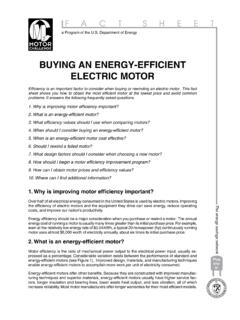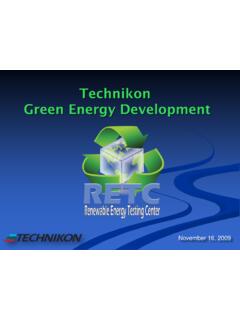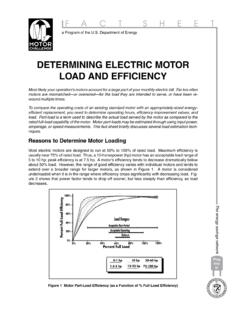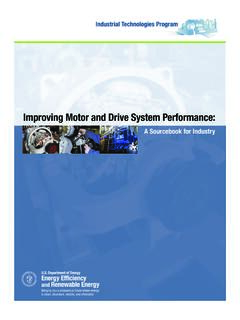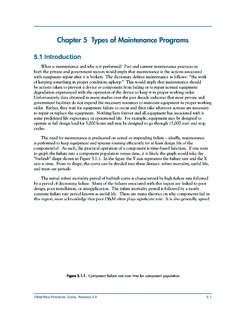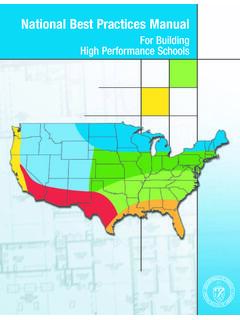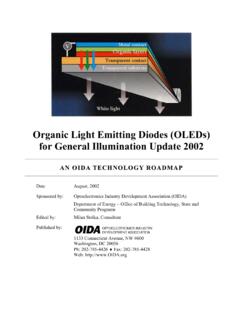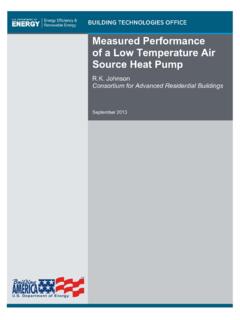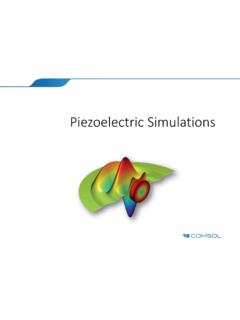Transcription of Technical Assessment of Compressed Hydrogen Storage …
1 ANL-10/24 Technical Assessment of Compressed Hydrogen Storage Tank Systems for automotive Applications Nuclear engineering Division About Argonne National Laboratory Argonne is a Department of Energy laboratory managed by UChicago Argonne, LLC under contract DE-AC02-06CH11357. The Laboratory s main facility is outside Chicago, at 9700 South Cass Avenue, Argonne, Illinois 60439. For information about Argonne and its pioneering science and technology programs, see Availability of This Report This report is available, at no cost, at It is also available on paper to the Department of Energy and its contractors, for a processing fee, from: Department of Energy Office of Scientific and Technical Information Box 62 Oak Ridge, TN 37831-0062 phone (865) 576-8401 fax (865) 576-5728 Disclaimer This report was prepared as an account of work sponsored by an agency of the United States Government.
2 Neither the United States Government nor any agency thereof, nor UChicago Argonne, LLC, nor any of their employees or officers, makes any warranty, express or implied, or assumes any legal liability or responsibility for the accuracy, completeness, or usefulness of any information, apparatus, product, or process disclosed, or represents that its use would not infringe privately owned rights. Reference herein to any specific commercial product, process, or service by trade name, trademark, manufacturer, or otherwise, does not necessarily constitute or imply its endorsement, recommendation, or favoring by the United States Government or any agency thereof. The views and opinions of document authors expressed herein do not necessarily state or reflect those of the United States Government or any agency thereof, Argonne National Laboratory, or UChicago Argonne, LLC. ANL-10/24 Technical Assessment of Compressed Hydrogen Storage Tank Systems for automotive Applications prepared by Thanh Hua1, Rajesh Ahluwalia1, J-K Peng1, Matt Kromer2, Stephen Lasher2, Kurtis McKenney2, Karen Law2, and Jayanti Sinha2 1 Nuclear engineering Division, Argonne National Laboratory, Argonne, Illinois 2 TIAX LLC, Lexington, MA September 2010 Table of Contents On-board Performance Cost Performance Results for Type IV Single Tank Systems.
3 14 Cost Results ..17 Assessments of Type-III vs. Type-IV tanks ..19 Off-board Assessments ..23 Performance Results ..24 Cost Results ..25 Summary and Conclusions ..26 APPENDIX A: Performance Assessment of Compressed Hydrogen Storage APPENDIX B: Cost Assessment of Compressed Hydrogen Storage Systems ..43 List of Figures Figure 1: On-board Compressed Hydrogen Storage system 8 Figure 2: Base case weight and volume distributions for the Compressed Hydrogen Storage systems ..15 Figure 3: Gravimetric and volumetric capacities of Compressed Hydrogen Storage systems and their sensitivity to tank empty pressure and carbon fiber translation efficiency .. 16 Figure 4: Base case component cost breakout for the Compressed Hydrogen Storage 17 Figure 5: On-board Compressed Hydrogen Storage for dual tank Figure 6: Comparison of capacities for Type-III and Type-IV tanks , single and dual tank 350-bar Storage Figure 7: Comparison of capacities for Type-III and Type-IV tanks , single and dual tank 700-bar Storage system .
4 21 Figure 8: Comparison of system cost projections for Type-III and Type-IV tanks , single and dual tank systems, and 350-bar and 700-bar iii List of Tables Table I: Summary results of the Assessment for Compressed Hydrogen Storage systems compared to DOE 6 Compressed Hydrogen Storage Table 1: On-board Compressed Hydrogen Storage system design assumptions .. 9 Table 2: Base case material versus processing cost breakout for Compressed Hydrogen Storage 18 Table 3: Summary results of the on-board cost Assessment for 350 and 700-bar Compressed Hydrogen Storage systems compared to DOE cost 18 Table 4: Life cycle assumptions for pipeline delivery scenario .. 24 Table 5: Fuel system ownership cost assumptions and 26 Table 6: Summary results of the Assessment for Compressed Hydrogen Storage systems .. 27 Table 7: Summary results of the Assessment for Type-III and Type-IV single and dual tank iv Acknowledgement and Disclaimer This report was prepared as an account of work sponsored by an agency of the United States Government.
5 Neither the United States Government nor any agency thereof, nor TIAX LLC, nor any of their employees, makes any warranty, express or implied, or assumes any legal liability or responsibility for the accuracy, completeness, or usefulness of any information, apparatus, product, or process disclosed, or represents that its use would not infringe privately owned rights. Reference herein to any specific commercial product, process, or service by trade name, trademark, manufacturer, or otherwise does not necessarily constitute or imply its endorsement, recommendation or favoring by the United States Government or any agency thereof. The views and opinions of authors expressed herein do not necessarily state or reflect those of the United States Government or any agency thereof. This report, and the conclusions contained herein, are the result of the exercise of Argonne National Laboratory (Argonne, ANL) and TIAX s professional judgment, based in part upon materials and information provided to us by third parties, which in certain cases, have not been independently verified.
6 Argonne and TIAX accept no duty of care or liability of any kind whatsoever to any third party, and no responsibility for damages, if any, suffered by any third party as a result of decisions made, or not made, or actions taken, or not taken, based on this document, or use of any of the information contained herein. This report may be produced only in its entirety. The cost analysis for the Compressed gas tank systems assumes Year 2009 technology status for individual components, and projects their cost at production volumes of 500,000 vehicles/year. It is not known whether the exact system configuration adopted for this cost analysis currently exists as an integrated automotive Hydrogen Storage system , or how well the components and subsystems inter-operate with each other. In developing the system configuration and component manifests, we have tried to capture all of the essential engineering components and important cost contributors.
7 However, the system selected for costing does not claim to solve all of the Technical challenges facing Hydrogen Storage transportation systems or satisfy DOE or FreedomCAR on-board Hydrogen Storage performance, safety, and durability targets.. v Technical Assessment of Compressed Hydrogen Storage Tank Systems for automotive Applications T. Q. Hua, R. K. Ahluwalia, and J-K Peng Argonne National Laboratory, Argonne, IL 60439 M. Kromer, S. Lasher, K. McKenney, K. Law, and J. Sinha TIAX LLC, Lexington, MA 02421 Abstract The performance and cost of Compressed Hydrogen Storage tank systems has been assessed and compared to the Department of Energy (DOE) 2010, 2015, and ultimate targets for automotive applications. The on-board performance and high-volume manufacturing cost were determined for Compressed Hydrogen tanks with design pressures of 350 bar (~5000 psi) and 700 bar (~10,000 psi) capable of storing kg of usable Hydrogen .
8 The off-board performance and cost of delivering Compressed Hydrogen was determined for Hydrogen produced by central steam methane reforming (SMR). The main conclusions of the Assessment are that the 350-bar Compressed Storage system has the potential to meet the 2010 and 2015 targets for system gravimetric capacity but will not likely meet any of the system targets for volumetric capacity or cost, given our base case assumptions. The 700-bar Compressed Storage system has the potential to meet only the 2010 target for system gravimetric capacity and is not likely to meet any of the system targets for volumetric capacity or cost, despite the fact that its volumetric capacity is much higher than that of the 350-bar system . Both the 350-bar and 700-bar systems come close to meeting the Well-to-Tank (WTT) efficiency target, but fall short by about 5%. These results are summarized in Table I below.
9 Table I: Summary results of the Assessment for Compressed Hydrogen Storage systems compared to DOE targets Performance and Cost Metric Units 350-bar 700-bar 2010 Targets 2015 Targets Ultimate Targets system Gravimetric Capacity wt% system Volumetric Capacity g-H2/L 28 40 70 Storage system Cost $/kWh 4 2 TBD Fuel Cost $/gge* 2-3 2-3 2-3 WTT Efficiency (LHV**) % 60 60 60 *gge: gallon gasoline equivalent **Lower heating value 6 Introduction The DOE Hydrogen Program sponsored performance and cost assessments of Compressed Hydrogen Storage for automotive applications during 2006 2009, consistent with the Program s Multiyear Research, Development and Demonstration Plan.
10 This report summarizes the results of these assessments. The results should be considered only in conjunction with the assumptions used in selecting, evaluating, and costing the systems discussed below and in the Appendices. Compressed Hydrogen Storage refers to storing Hydrogen at high pressures, typically 350 and 700 bar (~5,000 and ~10,000 psi), in a pressure capable vessel. This Assessment was based primarily on publicly available information and design schematics of Quantum s Type IV Compressed Hydrogen Storage tanks , which they manufacture in low-volume production today. The Assessment included an independent review of the tank design and Technical performance by Argonne National Laboratory (Argonne, ANL) [Hua 2010], an independent cost Assessment by TIAX LLC (TIAX) [Kromer 2010], and comments received from the FreedomCAR & Fuel Partnership Hydrogen Storage Technical Team, Quantum, Toray, Structural Composites Inc.
